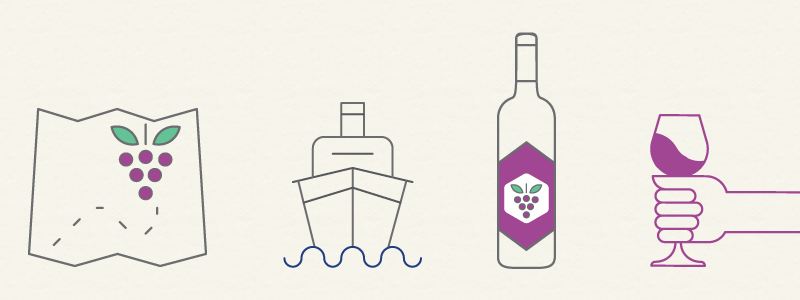Buying wine for almost everyone can be a relatively intimidating experience. Even if you possess a firm grasp on the grape, its regions and what wines you like and don’t, with all the wine on the market (millions and millions of labels) it can be tough to always feel like you’re picking a bottle you’re going to enjoy. This situation is what made Robert Parker and ratings so popular in the first place. Placing a number score on the bottle allowed wine drinkers to feel as if they had some sort of sense as to the quality of the juice in the bottle, but as Kermit Lynch, one of America’s most respected importers, wrote in his Adventures on the Wine Route ratings are very far from perfect, and definitely not universal. In fact, Lynch has often drunk wines rated in the 70s by critics that he has found absolutely delicious. A number does not mean everything.
So as the wine drinking population slowly begins to move away from ratings and seek other ways to discover new wines, what do we do when we wind up in a wine shop or store where we don’t know the clerk (or better yet, there isn’t a knowledgeable clerk available) and we don’t recognize the labels? Turn around the bottle and look at the back.
Thanks to America’s three tier system (we can’t believe we actually are saying thanks to these antiquated laws, but in this instance, trust us), located on the back of the bottle is often the name of the company that helped get the wine from whatever country of origin whose wine section you are currently standing in, to the shelf in front of you, and that company is the wine’s importer.
Over the years, many a wine drinker has romanticized the idea of importing wine, of traipsing around international vineyards drinking vino, meeting winemakers and discovering hidden gems. The truth is, importing isn’t as glamorous as most would like to believe; it is instead very hard work, but that hard work comes with a great payoff, especially if you can find an importer you trust.
Just like wine shop owners and restaurant wine directors, importers often have a perspective which they use to approach wine. This means if you find you tend to enjoy many of the wines the same importer has brought in, chances are you will enjoy many more of their offerings, because often their tastes and perspective unify across all of the wines that they represent, regardless of where the wine was made. That’s not to say the wine will all taste the same, but it is to say they will all be of similar quality and you will most likely enjoy many of them. An added bonus is that this same technique will help you avoid wines you don’t like in the future as well. If you have a few bottles from the same importer you don’t enjoy, chances are their tastes and yours just don’t match up.
The importer’s perspective is as variable as there are different types of wine drinkers, so you should be able to find one with whom your tastes align. Do you have a passion for organic and biodynamic wines? There are importers out there that only import these styles. Looking for “small batch” wines made by innovative young winemakers? Yep, there’s an importing company for whom this is their MO. How about classic French wines from relatively unknown producers? There are several importers out there doing that too.
So why is a label that can provide yet another way for wine wine drinkers to weed through the noise printed on the back of the bottle instead of the front? For the most part, tradition with a little bit of ego thrown in as well. If you’re the winemaker, this is a bottle you’ve poured your heart and soul into. Your were with this wine since the grapes began to bud, so it’s understandable that you’d only want your name on the front of the wine bottle. But a few wine importers seem to be trying to change that, convincing smaller winemakers that their name should be listed on the front as well, not for ego as much as for clarity for the consumer. If one day this became the norm, we imagine many wine drinkers would have a much easier time making selections.
However, while this is currently something a few importers are trying, unless the importer is extremely famous, such as Kermit Lynch, or very persuasive, it’s likely most winemakers won’t go for it. This just means that for the time being, we’ll all have to stick to turning around the bottle to find the importer’s name. But trust us, you’ll be happy that you did.
Header image via Shutterstock.com

